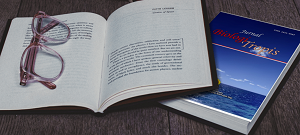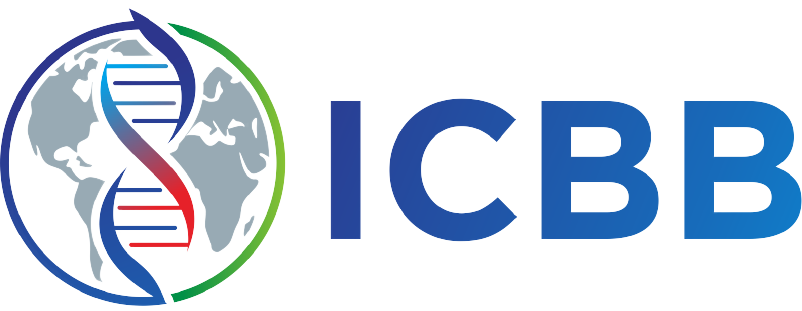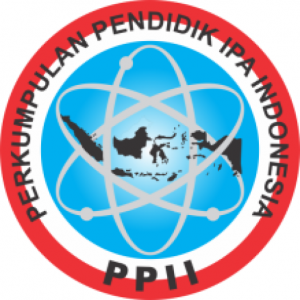Analysis the Abundance and Composition of Microplastics in Skipjack Fish (Katsuwonus pelamis) at Muara Angke Fish Auction
Authors
Erlin Triana , Meitiyani Meitiyani , Moh. Bagas Manowo J. , Agus Pambudi DarmaDOI:
10.29303/jbt.v25i1.8246Published:
2025-01-29Issue:
Vol. 25 No. 1 (2025): Januari - MaretKeywords:
Fish auction place, gastrointestinal tract, muara angke, microplastic, skipjack.Articles
Downloads
How to Cite
Downloads
Metrics
Abstract
Marine pollution due to plastic waste has become a global problem that has yet to be solved. In the ocean, floating plastics degrade into small particles (<5 mm) known as microplastics. Its small size has the risk of being eaten by marine organisms. One of the marine products that have high economic value is skipjack. This study aims to determine the content, abundance, and influence of the amount of microplastics with the weight of the digestive tract of skipjack (Katsuwonus pelamis) at Muara Angke auction fish. The deconstruction process in this study used 10% KOH as much as 3x the volume of tissue and 30% H2O2 as much as 5 ml. The results showed that fiber- type microplastics dominated with a percentage of 66%, fragments 20%, and films 14%. There are 6 kinds of colors found, namely transparent, black, red, blue, yellow, and orange. Transparent color dominates with a percentage of 74%. The total microplastic particles found in the skipjack digestive tract were 2336 particles with an abundance value of 259.55 particles/individual. The number of microplastics found had no correlation with the weight of the fish digestive tract with P (sig) 0.509 > 0.05 (α). All skipjack samples identified were contaminated with microplastics. Fiber and transparent color microplastic types dominated. The amount of microplastics had no influence on the weight of the fish digestive tract.
References
Ambasari, D. A., & Anggiani, M. (2022). Kajian Kelimpahan Mikroplastik pada Sedimen di Wilayah Perairan Laut Indonesia. Oseana, 47(1),20–28. https://www.researchgate.net/publication/360310821_Kajian_Kelimpahan_Mikroplasik_Pada_Sedimen_Di_Wilayah_Perairan_Laut_Indonesia (Diakses pada 31 Agustus 2023)
Ambasari, D. A., & Anggiani, M. (2022). Kajian Kelimpahan Mikroplastik pada Sedimen di Wilayah Perairan Laut Indonesia. Oseana, 47(1), 20–28.
Azad, S. M. O., Towatana, P., Pradit, S., Patricia,
B. G., & Hue, H. T. (2018). Ingestion of Microplastics by some Commercial Fishes in the Lower Gulf of Thailand: A Preliminary Approach to Ocean Conservation. International Journal of Agricultural Technology, 14(7), 1017–1032.
Azharil, M. Y., & Paskah, I. (2023). Bahaya Sampah Plastik di Laut bagi Mahluk Hidup. Riset Sains Dan Teknologi Kelautan, 6(2), 172–175. https://doi.org/10.62012/sensistek.v6i2. 31704
Fachrudin, A. (2022). Analisis Mikroplastik pada Ikan Kakap Merah (Lutjanus malabaricus, Bloch & Schneider, 1801) dan Ikan Baronang (Siganus Javus, Linnaeus, 1766) di TPI Sekitar Teluk Jakarta. Skripsi. Tidak diterbitkan. Universitas Islam Negeri Syarif Hidayatullah Jakarta
Guerrera, M. C., Aragona, M., Porcino, C., Fazio, F., Laurà, R., Levanti, M., Montalbano, G., Germanà, G., Abbate, F., & Germanà, A. (2021). Micro and Nano Plastics Distribution in Fish as Model Organisms: Histopathology, Blood Response and Bioaccumulation in Different Organs. Applied Sciences (Switzerland), 11(13),1–24. https://doi.org/10.3390/app11135768
Harpah, N., Suryati, I., Leonardo, R., Risky, A., Ageng, P., & Addauwiyah, R. (2020). Analisa Jenis, Bentuk dan Kelimpahan Mikroplastik di Sungai Sei Sikambing Medan. Jurnal Sains Dan Teknologi, 20(2), 108–115. https://doi.org/10.36275/stsp.v20i2.270 Hastuti, A. R., Lumbanbatu, D. T. F., &
Wardiatno, Y. (2019). The Presence of Microplastics in the Digestive Tract of Commercial Fishes off Pantai Indah Kapuk coast, Jakarta, Indonesia. Biodiversitas, 20(5), 1233–1242. https://doi.org/10.13057/biodiv/d20051 3
Isobe, A., Uchiyama-Matsumoto, K., Uchida, K., & Tokai, T. (2017). Microplastics in the Southern Ocean. Marine Pollution Bulletin, 114(1), 623–626. https://doi.org/10.1016/j.marpolbul.201 6.09.037
Iwasaki, S., Isobe, A., Kako, S., Uchida, K., & Tokai, T. (2017). Fate of Microplastics and Mesoplastics Carried by Surface Currents and Wind Waves: A Numerical Model Approach in the Sea of Japan. Marine Pollution Bulletin, 121(1–2), 85–96.https://doi.org/10.1016/j.marpolbul.201 7.05.057
Kapo, F. A., Toruan, L. N. L., & Paulus, C. A. (2020). Jenis dan Kelimpahan Mikroplastik pada Kolom Permukaan Air di Perairan Teluk Kupang. Jurnal Bahari Papadak, 1(1), 10–21.
Key, S., Ryan, P. G., Gabbott, S. E., Allen, J., & Abbott, A. P. (2024). Influence of Colourants on Environmental Degradation of Plastic Litter. Environmental Pollution, 347(January), 1–9. https://doi.org/10.1016/j.envpol.2024.12 3701
Kye, H., Kim, J., Ju, S., Lee, J., Lim, C., & Yoon, Y. (2023). Microplastics in Water Systems: A Review of Their Impacts on the Environment and Their Potential Hazards. Heliyon, 9(3), 1–31. https://doi.org/10.1016/j.heliyon.2023.e 14359
Lucia, G. A. de, Vianello, A., Camedda, A., Vani, D., Tomassetti, P., Coppa, S., Palazzo, L., Amici, M., Romanelli, G., Zampetti, G., Cicero, A. M., Carpentieri, S., Di Vito, S., & Matiddi, M. (2018).
Sea Water Contamination in the Vicinity of the Italian Minor Islands Caused by Microplastic Pollution. Water (Switzerland), 10(8), 1–13. https://doi.org/10.3390/w10081108
Mahamud, A. G. M. S. U., Anu, M. S., Baroi, A., Datta, A., Khan, M. S. U., Rahman, M., Tabassum, T., Tanwi, J. T., & Rahman, T. (2022). Microplastics in Fishmeal: A Threatening Issue for Sustainable Aquaculture and Human Health. Aquaculture Reports, 25(June), 101205. https://doi.org/10.1016/j.aqrep.2022.101 205
Mbugani, J. J., Machiwa, J. F., Shilla, D. A., Kimaro, W., Joseph, D., & Khan, F. R. (2022). Histomorphological Damage in the Small Intestine of Wami Tilapia (Oreochromis urolepis) (Norman, 1922) Exposed to Microplastics Remain Long after Depuration. Microplastics, 1(2), 240–253. https://doi.org/10.3390/microplastics10 20017
Neves, D., Sobral, P., Ferreira, J. L., & Pereira, T. (2015). Ingestion of Microplastics by Commercial Fish Off the Portuguese Coast. Marine Pollution Bulletin, 101(1), 119–126. https://doi.org/10.1016/j.marpolbul.201 5.11.008
Ngai, M. M. M., Toruan, L. N. L., & Tallo, I. (2024). Jenis dan Kelimpahan Mikroplastik pada Ikan Kakap Merah (Lutjanus malabaricus) di Perairan Teluk Kupang, Nusa Tenggara Timur. Journal of Aquatic Resources and Fisheries Management, 5(February), 11– 20.
Nusantara, R., Alby, M. L., Arisandi, P., Budiarti, E. C., Azis, & Muttaqin, A.
(2021). Screening Awal Mikroplastik di Perairan Provinsi DKI Jakarta (I. Septian (ed.). Dinas Lingkungan Hidup Provinsi DKI Jakarta.
Pamungkas, N. A. G., Hartati, R., Redjeki, S., Riniatsih, I., Suprijanto, J., Supriyo, E., & Widianingsih, W. (2022). Karakteristik Mikroplastik pada Sedimen dan Air laut di Muara Sungai Wulan Demak. Jurnal Kelautan Tropis, 25(3), 421–431. https://doi.org/10.14710/jkt.v25i3.1492 3
Prapanchan, V. N., Kumar, E., Subramani, T., Sathya, U., & Li, P. (2023). A Global Perspective on Microplastic Occurrence in Sediments and Water with a Special Focus on Sources, Analytical Techniques, Health Risks, and Remediation Technologies. Water (Switzerland), 15(11), 1–35. https://doi.org/10.3390/w15111987
Purnama, D., Johan, Y., Wilopo, M. D., Renta, P. P., Sinaga, J. M., Yosefa, J. M., M, H. M., Suryanita, A., Pasaribu, H. M., & Median, K. (2021). Analisis Mikroplastik pada Saluran Pencernaan Ikan Tongkol (Euthynnus affinis) Hasil Tangkapan Nelayan di Pelabuhan Perikanan Pulau Baai Kota Bengkulu. Jurnal Enggano, 6(1), 110–124. https://doi.org/10.31186/jenggano.6.1
Rahmawati, S., Nuzula, F. F., Sulistyo, E. N., & Hakim, L. (2023). Identification of Microplastics in Fish from the Local Fish Market of Yogyakarta Province, Indonesia. IOP Conference Series: Earth and Environmental Science, 1263(1), 1–11. https://doi.org/10.1088/1755- 1315/1263/1/012043
Saeedi, M. (2023). How Microplastics Interact with Food Chain: a Short Overview of Fate and Impacts. Journal of Food Science and Technology, 61(3), 403–413. https://doi.org/10.1007/s13197-023-05720-4
Saha, M., Naik, A., Desai, A., Nanajkar, M., Rathore, C., Kumar, M., & Gupta, P. (2021). Microplastics in Water, Sediment, and Seafood as an Emerging Threat to the Marine Environment: A Case Study in Goa, West Coast of India. Chemosphere, 270(129359), 1–30. https://www.sciencedirect.com/science/ article/abs/pii/S0045653520335578 (Diakses pada 24 Februari, 2024)
Sahu, A. K., Sudhakar, K., & Sarviya, R. M. (2019). Influence of UV Light on the Thermal Properties of HDPE/Carbon Black Composites. Case Studies in Thermal Engineering, 15(100534), 1–7.
Sathish, N., Jeyasanta, I., & Patterson, J. (2020). Occurrence of Microplastics in Epipelagic and Mesopelagic Fishes from Tuticorin, Southeast Coast of India. Science of The Total Environment, 720, 137614. https://doi.org/https://doi.org/10.1016/j. scitotenv.2020.137614
Senduk, J. L., Suprijanto, J., & Ridlo, A. (2021). Mikroplastik pada Ikan Kembung (Rastrelliger sp.) dan Ikan Selar (Selaroides eptolepis) di TPI Tambak Lorok Semarang dan TPI Tawang Rowosari Kendal. Buletin Oseanografi Marina, 10(3), 251–258. https://doi.org/10.14710/buloma.v10i3.3 7930
Seprandita, C. W., Suprijanto, J., & Ridlo, A. (2022). Kelimpahan Mikroplastik di Perairan Zona Pemukiman, Zona Pariwisata dan Zona Perlindungan Kepulauan Karimunjawa, Jepara. Buletin Oseanografi Marina, 11(1), 111– 122. https://doi.org/10.14710/buloma.v11i1.3 0189
Singh, R., Kumar, R., & Sharma, P. (2022). Microplastic in the Subsurface System: Extraction and Characterization from Sediments of River Ganga near Patna, Bihar. In Advances in Remediation Techniques for Polluted Soils and Groundwater (Issue January, pp. 191– 217). School of Ecology & Environment Studies, Nalanda University. https://doi.org/10.1016/B978-0-12- 823830-1.00013-4
Thiemann, T. (2023). Microplastic in the Marine Environment of the Indian Ocean. Journal of Environmental Protection, 14(04),297–359. https://doi.org/10.4236/jep.2023.144020
Tubagus, W., Sunarto, I. M., & Yuliadi, L. P. S. (2020). Identification of microplastic composition on clams (Gafrarium tumidum) and sediments in Pari Island, Seribu Islands, Jakarta. Ilmu Kelautan: Indonesian Journal of Marine Sciences, 25, 115-120. https://doi.org/10.14710/ik.ijms.25.3.11 5-120
Widianarko, B., & Hantoro, I. (2019). Mikroplastik dalam Seafood dari Pantai Utara Jawa. In Chemosphere (Vol. 228). Universitas Katolik Soegijapranata. https://doi.org/10.1016/j.chemosphere.2 019.04.156
Wilyalodia, H. C., Tybeyuliana, E. V., Mahendra, A. P. D., Pratama, M. A., & Rahmawati, S. (2023). Seasonal Variability on Microplastic Polutions in Water and Sediment of Ciliwung River. CSID Journal of Infrastructure Development, 6(2), 185–197. https://doi.org/10.7454/jid.v6.i2.1118
Yudhantari, C. I., Hendrawan, I. G., & Ria Puspitha, N. L. P. (2019). Kandungan Mikroplastik pada Saluran Pencernaan Ikan Lemuru Protolan (Sardinella Lemuru) Hasil Tangkapan di Selat Bali. Journal of Marine Research and Technology, 2(2), 48–52. https://doi.org/10.24843/jmrt.2019.v02.i02.p10
License
Copyright (c) 2025 Erlin Triana, Meitiyani Meitiyani, Moh. Bagas Manowo J., Agus Pambudi Darma

This work is licensed under a Creative Commons Attribution 4.0 International License.

Jurnal Biologi Tropis is licensed under a Creative Commons Attribution 4.0 International License.
The copyright of the received article shall be assigned to the author as the owner of the paper. The intended copyright includes the right to publish the article in various forms (including reprints). The journal maintains the publishing rights to the published articles.
Authors are permitted to disseminate published articles by sharing the link/DOI of the article at the journal. Authors are allowed to use their articles for any legal purposes deemed necessary without written permission from the journal with an acknowledgment of initial publication to this journal.


























